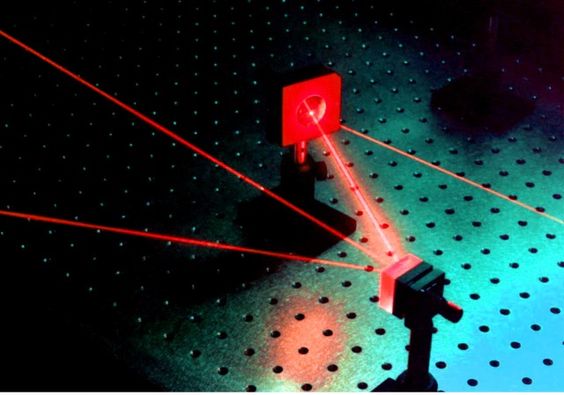In the external oil technology services, especially for deep wells, ultra-deep well testing services, more and more use of full-bore APR tools. The OMNI cycle valve is in addition to the test valve, the core of the tool, its operation is directly related to whether the test was successful. OMNI cycle valve is a kind of circulation valve that can be operated by annular pressure and can be switched several times, and is also a kind of more advanced circulation valve. The cycle valve is simple, just periodic cyclical pressure, the pressure to complete the operation. And as the ability to repeatedly switch on and off is the most common tool used in APR test tubes. OMNI cycle valve operation is simple, but there are still many aspects of maintenance and care worth noting, such as the slightest mistake, not only because of the intended purpose of the valve does not affect the success of the process, but also because of improper operation caused Tool damage, resulting in unnecessary losses. The experience and method given below is obtained by the author in combination with the field application of dozens of wells in Indonesia test service. It is believed that it will be helpful to operators of APR tools in the future. The successful application of such tools will also be broader to expand our technical service space. Common anomalies in operation (1) If it is clear that the OMNI valve is not operating, it is advisable to increase annulus operating pressure, most likely the trip position 3 to 4 turns before the recycle position if the tool is not running regularly. (2) Increase the operating pressure to the maximum allowable pressure until the tool reflects the correct position. If the tool still does not respond, it is most likely that the OMNI valve is closed. (3) If the tool does not respond when closing the ball valve, the pressure through the ball valve should be balanced before operating the tool at a higher operating pressure. (4) If it is difficult to close the circulation hole, it is likely that the circulation hole is partially blocked, and pressure should be raised at this time. It is recommended to use a higher opening pressure to remove the clogging of the circulation holes. Maintenance should pay attention to the problem 1 inspection before disassembly OMNI valve should be removed before disassembling the loop position, otherwise the tool can only disassemble the ball valve parts, disassembly of other parts is impossible, any disassembly will be possible for the tool Cause damage. 2. Use of special tools To avoid damaging the pawl and seal of the OMNI valve during disassembly of the recycle part, special tools should be used when installing and removing the recycle bushing, and tools such as copper rods should be used as hard as possible. Ball valve direction Whether the ball valve is open or off the state, there are two positions to make the ball installed on the tool, so care should pay special attention to the direction of the ball valve. OMNI valves that have just been serviced should be in the recirculation zone with the recirculation holes open and the ball valves closed. After the normal installation is completed, the ball should be "eye" outward, that is, away from the direction of the tool. Such as anti-ball valve installed in the ground to do functional tests is difficult to find. The tool can still operate as expected from the cycle position to the test position. However, when the tool goes down, the OMNI valve will only stay in the test position and will no longer be able to run to the cycle position for normal cycle operation. A few suggestions 1. For the test and even the cycle process, should monitor the annulus pressure at all times, so as to accurately grasp the position of the ball changer in the OMNI valve changing mechanism. In particular, in the process of circulation, more attention should be paid to the number of cycles and various unexpected or irregular pressure changes that can not be expected. It is advisable to install a Patton recorder capable of monitoring annulus pressure and recorded on a card at the well head or to connect a pressure probe of the data acquisition system to the annulus to monitor changes in annulus pressure over time. 2. It is recommended that the tool should be maintained and operated on-site after each downhole, especially for high-yielding aquifers that can damage the recirculation valve and the seal at the recirculation site as a result of severe sand production. 3. If the tool works abnormally downhole (the circulation hole is not open, etc.), try to move the tool to the circulation position after starting. It is advisable to monitor the nitrogen chamber pressure during this step, which will help determine where the tool is in trouble. Such as the ground transposition is still difficult, it is recommended to remove the operating part, retain the pawl, and then re-run, because the ball valve part of the card may also lead to not transposed.
A Fiber Laser is a laser where the active medium being used is an optical fiber that has been doped in rare elements; typically, erbium, ytterbium, neodymium, thulium, praseodymium, holmium or dysprosium. While you don`t need to worry too much about which rare-earth elements have been used, the main thing to note is that it is fiber that is being used at the centre of this laser machine. This is different to the two other main types of laser, which are gas lasers (typically uses helium-neon or carbon dioxide) and crystal lasers. Fiber Lasers are the newest type of laser to hit the market, with many arguing that it is the more beneficial of the three types.

Fiber Laser Machine
Fiber Laser Cutter Machine,Cnc Laser Cutting Machine,Fiber Laser Cutting Machine,Laser Wood Cutting Machine
JINAN XUANLIN MACHINERY CO., LTD. , https://www.cncfiberlaser.com
